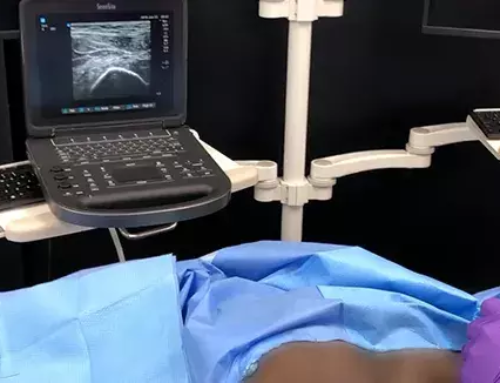
Anesthesia can refer to a number of different medicines to assist in medical procedures of all types. While commonly thought of as a single type that puts you into a full sleep, anesthesia is actually anything that makes you comfortable to assist in the safety of performing these procedures. At Maverick Medical Education, we know about anesthesia of all types and can help you become proficient at a number of them.
Local Anesthesia
Most people have had local anesthesia at some point in their lives. This is the type of numbing agent that is applied during simple procedures like a tooth extraction or in placing stitches. Any medical professional can administer local anesthesia, which is given with an injection to a specific area. This type of anesthesia is quick and can be controlled by the person doing the procedure. A patient may feel pressure with local anesthesia, but shouldn’t feel any pain.
Regional Anesthesia
Regional anesthesia is also a form given by injection, but instead of being administered close to specific location, where the procedure is focused, the anesthesia will be placed close to a cluster of nerves. This placement will allow for a larger part of the body to be numbed, like an entire limb. Depending on the type of anesthesia given, the area will be numb for anywhere from 3-24 hours, allowing for the procedure and a touch of recovery time if needed.
Neuraxial Anesthesia
Neuraxial anesthesia is similar to regional anesthesia, but is placed near the spinal roots instead of other nerve clusters. This placement allows for a larger portion of the body to be numbed and more comfortable for the duration of the procedure. The most well known Neuraxial anesthesia is an epidural, commonly given to assist in childbirth or other abdominal surgeries. A spinal is often used for cesarean deliveries and knee surgeries. Different levels of sedation are available for neuraxial (and regional anesthesia) depending on the level of consciousness a patient or medical professional is desiring.
General Anesthesia
For General anesthesia, a mixture of different drugs is administered and monitored intravenously to completely relax the body and sedate the patient. Along with this anesthesia, drugs are administered to relax the muscles of the body, keeping it still. Extra precautions are followed, including assistance in breathing and constant monitoring of an anesthesiologist or other trained medical professional. Side effects are common with general anesthesia, including nausea and delirium.
Every form of anesthesia has benefits for both the patient and the medical provider. Each patient is different in how they will react to and tolerate any type of anesthesia given. By having a diverse array of techniques, medical providers can create a plan with their patients to choose and perform in a way that is best for them.
To learn more about the anesthesia techniques used by Maverick Medical Education, contact us today. We use a variety of nerve blocks and pain relief techniques before, during, and after medical procedures to assist our patients in pain levels and in healing afterwards.




